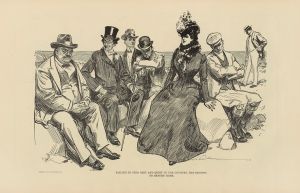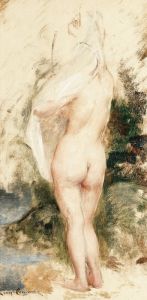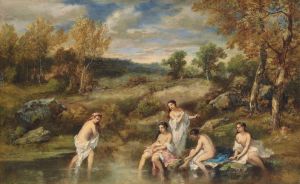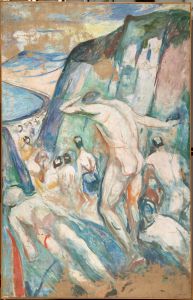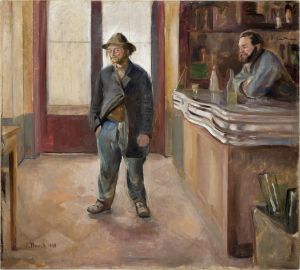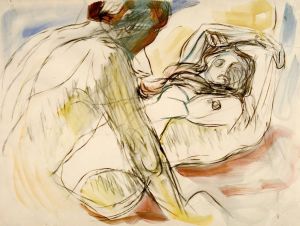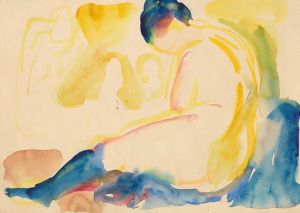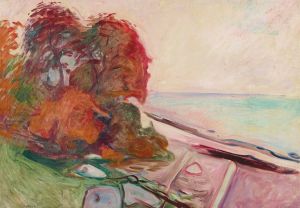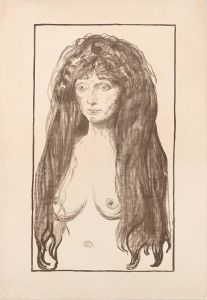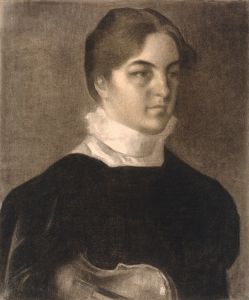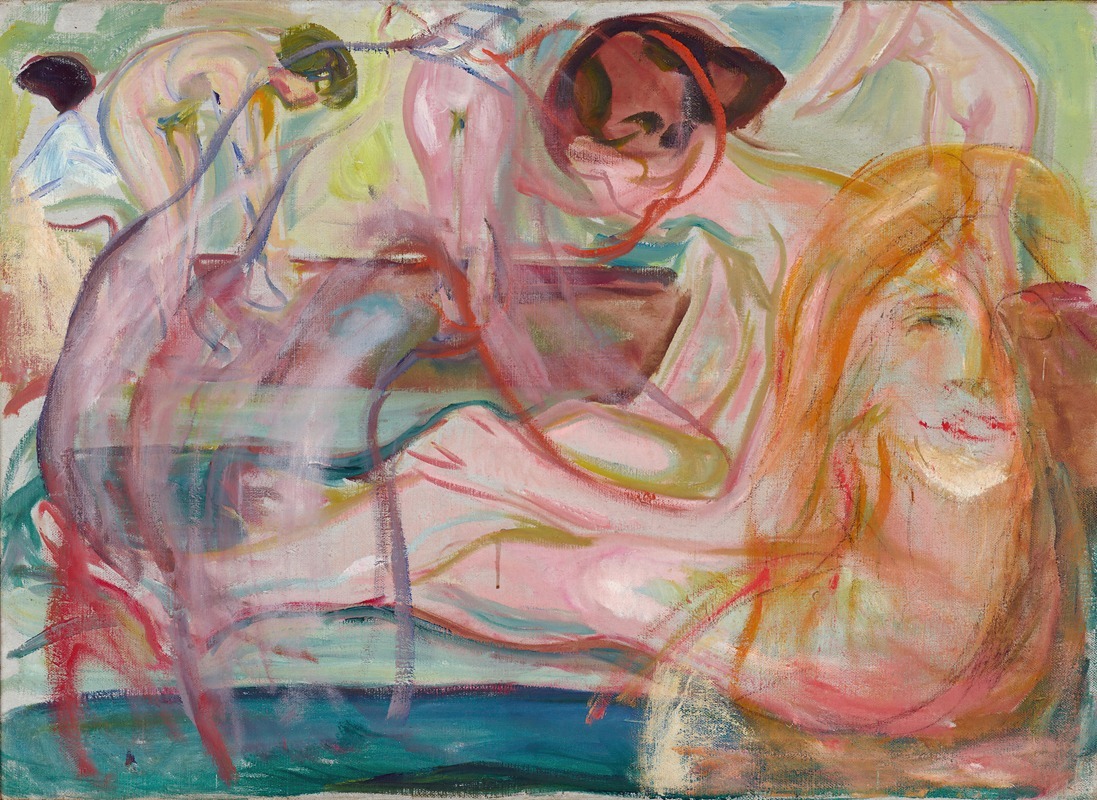
Women in the Bath
A hand-painted replica of Edvard Munch’s masterpiece Women in the Bath, meticulously crafted by professional artists to capture the true essence of the original. Each piece is created with museum-quality canvas and rare mineral pigments, carefully painted by experienced artists with delicate brushstrokes and rich, layered colors to perfectly recreate the texture of the original artwork. Unlike machine-printed reproductions, this hand-painted version brings the painting to life, infused with the artist’s emotions and skill in every stroke. Whether for personal collection or home decoration, it instantly elevates the artistic atmosphere of any space.
"Women in the Bath" is a painting by the renowned Norwegian artist Edvard Munch, who is best known for his iconic work "The Scream." Munch was a pivotal figure in the Symbolist and Expressionist movements, and his work often explored themes of existentialism, love, anxiety, and the human condition. While "Women in the Bath" may not be as widely recognized as some of his other works, it nonetheless reflects Munch's distinctive style and thematic concerns.
Edvard Munch was born on December 12, 1863, in Loten, Norway, and grew up in Oslo. His early life was marked by illness and the death of his mother and sister, experiences that deeply influenced his artistic vision. Munch's work is characterized by a deep psychological intensity, often depicting emotional states and human experiences with a raw and evocative style.
"Women in the Bath" is part of Munch's exploration of the human form and intimate spaces. The painting features women in a bathing scene, a subject that Munch revisited in various forms throughout his career. Bathing scenes were a common motif in art history, often symbolizing purity, vulnerability, and the private sphere. Munch's interpretation of this theme is likely imbued with his characteristic emotional depth and exploration of human psychology.
Munch's technique often involved bold colors, dramatic compositions, and a focus on conveying emotion rather than realistic representation. His use of color and form in "Women in the Bath" would have been intended to evoke a particular mood or psychological state, consistent with his broader body of work. Munch's paintings frequently blur the line between reality and emotion, creating a sense of tension and introspection.
Throughout his career, Munch was influenced by various artistic movements and contemporaries, including the Symbolists and the Post-Impressionists. He was also deeply inspired by the writings of philosophers and playwrights, which informed his exploration of existential themes. Munch's work often reflects a synthesis of these influences, resulting in a unique and powerful artistic voice.
"Women in the Bath" should be viewed within the context of Munch's broader oeuvre, which includes a series of paintings known as "The Frieze of Life." This series delves into themes of love, anxiety, and death, capturing the cyclical nature of human experience. While specific details about "Women in the Bath" may be limited, it is reasonable to consider it as part of Munch's ongoing exploration of these universal themes.
Edvard Munch's impact on modern art is profound, with his work influencing a wide range of artists and movements. His ability to convey complex emotional states through his distinctive style has left a lasting legacy in the art world. Munch continued to create and exhibit his work until his death on January 23, 1944, in Oslo, Norway. His paintings remain a subject of study and admiration, offering insight into the human psyche and the power of visual expression.







